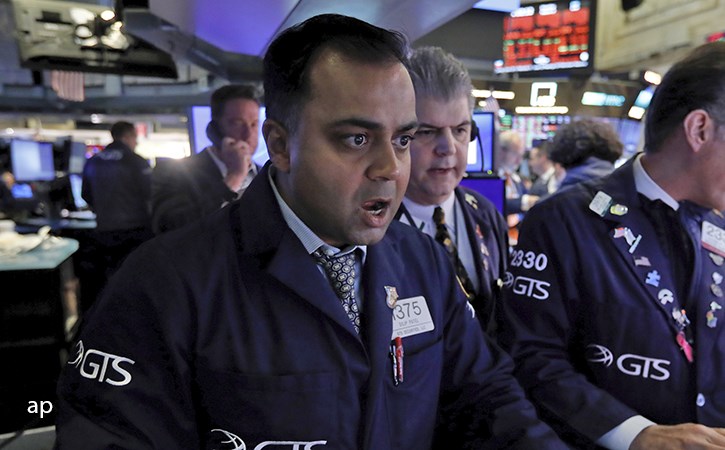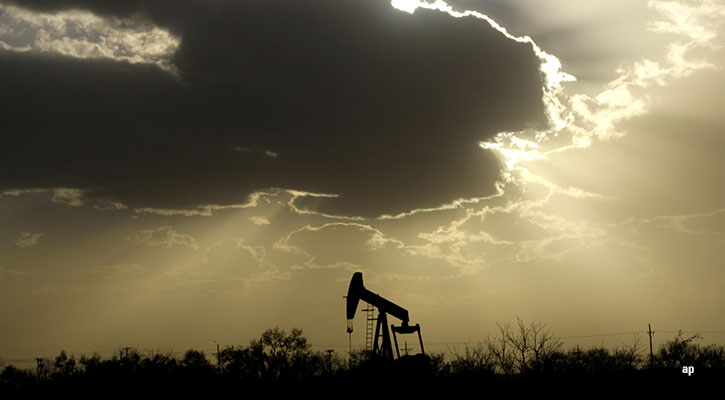
Inflation in 2022 is set to peak at its highest level in four decades.
High demand has conspired with supply constraints to cause price surges in many industries, hitting energy and autos especially hard. But once these supply constraints eventually resolve, we expect the various price spikes to unwind in a deflationary rush. Combined with the effect of the Federal Reserve's interest-rate hikes, we expect inflation to recede back to normal in 2023 and thereafter.
We forecast inflation to average 2.4% over 2022-26 as a whole (in terms of the personal consumption expenditures price index), only slightly above the Fed's 2% target. The year 2022 will deliver the worst for inflation (5.9%), but over 2023-26, we expect inflation to average just 1.5%.

Inflation Data Looks Alarming, But Details Are More Comforting
Though the short-term inflation rate is striking, a deeper look at the data suggests less reason for panic around longer-term inflation.
For one thing, a handful of categories are responsible for today's high inflation, and we don't expect pricing pressure in these categories to persist. In a repeat of the 1970s “Great Inflation,” we should be witnessing broad, economywide inflation, but we haven't seen it occurring. If inflation is attributable to specific issues in a few industries, then it is a problem that can be eventually fixed.
The chart below shows the contribution of each type of good to excess inflation, or the difference between cumulative inflation since the start of the coronavirus pandemic and inflation’s prepandemic trend. Since the pandemic's onset, we’ve seen 9.3% in excess inflation.
A little more than a fourth of that total (2.4%) comes from autos, since prices have spiked as vehicle production has been held back by the semiconductor shortage. Another 1% comes from other core goods affected by issues similar to those faced by vehicles.
Energy prices have contributed about 2.8% of the excess inflation (not to mention spillover effects via input prices to other goods categories), and they have been the prime driver of higher inflation recently owing to the conflict in Ukraine.

We Forecast Inflation From a Bottom-Up Perspective
Given the role of industry-specific shocks, we forecast inflation using a bottom-up methodology.
We're projecting large deflation in prices for durable goods, food, and energy over 2023-26.
- For durable goods, resolution of the semiconductor shortage should play a large role in expanding supply. A normalization of consumer spending mix will also shift demand away from durables (and other goods) and back into services.
- For food and energy, prices should subside as these industries adjust to disruption from the Russia-Ukraine conflict and other factors.
We don't expect the price spikes in energy and durables to be replaced by new problems elsewhere in the economy. We expect moderate wage growth and the absence of any long-lasting supply disruptions to keep general inflation at restrained levels.
Fed tightening will cool off the overall economy substantially in 2023 and 2024, extinguishing the inflationary fire before it spreads to the broader economy.

Supply Chains Are Healing as Demand Normalizes and Capacity Expands
A broad array of production and logistical disruptions contributed to price inflation in durables and other parts of the economy. These are captured in the New York Fed’s Global Supply Chain Pressure Index, which peaked at extreme levels in late 2021. However, it now appears to be normalizing. Supply chains are healing as demand normalizes and capacity catches up.
As one indicator on the logistics side, enough container ships are set to be delivered over 2022-25 to expand the current fleet by 30%. On the manufacturing side, capacity is also expanding in the United States and other major economies (most notably China). It will take time to fulfill the backlog of unfilled demand, but within a few years we’re likely to be talking more about supply gluts than supply shortages.

Beyond these broad supply-chain disruptions, perhaps one half of the runup in durable goods prices looks be a result of the semiconductor shortage alone.
Semiconductor manufacturing capacity is frantically expanding, with 2022 capital expenditures expected to soar 90% above prepandemic levels. It takes a while to ramp up capacity, but it is now a question of when—not if—the semiconductor shortage will be cleared.
This Is Not the 1970s Oil Price Shock
A key reason we're sanguine about inflation is expected lower energy prices. Morningstar's energy team forecasts oil prices to fall from an average $97 per barrel in 2022 to $55 per barrel in 2025 (West Texas Intermediate)—about where prices were in 2019 before the pandemic.
Oil prices have skyrocketed as sanctions and boycotts have disrupted Russia's oil supply. Compensating for Russia will take some time, but we expect producers in the U.S. and elsewhere to steadily ramp up production until prices fall back to the marginal cost of production, which we assess at $55.
The contrast with the 1970s oil price shock could not be greater. Oil prices first tripled in 1973 and ended the decade up 11 times versus 1970 levels. There were short-run disruptions that contributed to that surge, but the long-term story was the awakening of OPEC's market power, which never returned to the rapid production growth exhibited in the 1960s. Also, other cheap sources of crude had been tapped out by this time, necessitating a shift to offshore drilling and other, more-expensive sources.
These kinds of secular drivers of higher prices explain why the 1970s oil shock never fully receded—but secular drivers aren't at work in today's oil price surge.

Housing Won't Be the Next Big Driver of High Inflation
There's been much discussion about whether the inflationary fire will spread to the housing market next.
Housing prices have reached lofty levels. If they stay there, they will drive higher inflation over the next several years. However, we expect home prices to reverse course before they can add too much to inflation.
The Fed’s interest-rate hikes have caused a sharp deterioration in home affordability, which is rapidly cooling off housing demand. As a result, we expect housing demand to drop 10% between 2022 and 2023, which will in turn drive a cumulative 8% drop in housing prices between 2022 and 2025.
Of course, while falling housing prices equal good news for inflation, they will mean pain for homeowners who assumed prices would keep rising when planning out their personal finances.













.png)









